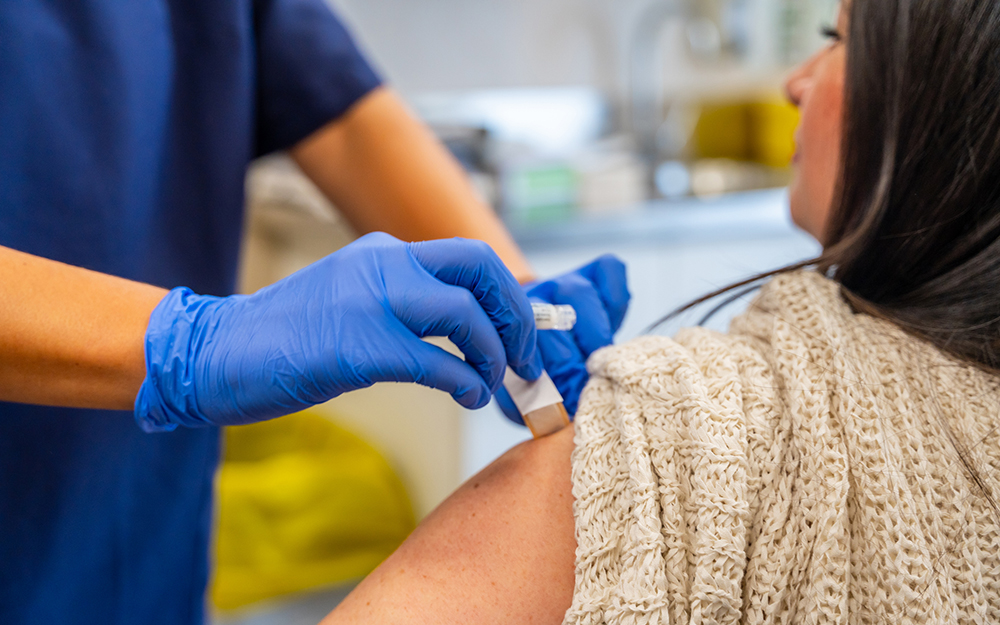Medical providers featured in this article

In Brief
{{cta-block}}
For some COVID-19 patients, symptoms can linger for months or even years. Long COVID can make it hard to return to work or school, care for children or just manage daily life.
We asked Dr. Catherine Le, an infectious disease specialist and the director of the Cedars-Sinai COVID-19 Recovery Program, to answer frequently asked questions about long COVID symptoms, diagnosis, recovery and treatment.
{{providers}}
How common is long COVID?
Dr. Catherine Le: Long COVID is still a bit of an unknown, but I would say it’s fairly common. A survey in 2022 indicated that some 19% of COVID-19 patients in the U.S. had developed the syndrome.
What are the symptoms of long COVID?
CL: Fatigue is the most common symptom and can be severe enough to interfere with daily life. It often is markedly worse after physical or mental effort. Many long COVID patients also report brain fog.
Other long-haul symptoms include muscle aches, headaches, respiratory symptoms, stomach issues and neurological problems that impair motor function or trigger a pins-and-needles sensation. Some people experience anxiety, insomnia and agitation that can’t be explained by other factors. Patients can have all these symptoms or a combination of a few.
When does COVID-19 turn into long COVID?
CL: Most experts define long COVID as having new, returning or ongoing symptoms more than 12 weeks after getting infected with the virus that causes COVID-19, when those symptoms can’t be explained by anything else. Note that rebound COVID is something different altogether, and it involves a brief surge in symptoms that starts about two to eight days after you test negative or stop feeling sick.
How long does long COVID usually last?
CL: The good news is that most patients get better in less than six months. That said, we have patients who got infected in 2020 and still aren’t free of their symptoms, although that’s rare. COVID-19 hasn’t been around long enough for us to know if some impairments last a lifetime.
Why does it happen?
CL: Scientists at Cedars-Sinai have published research showing that the virus’ spike protein may have properties that cause the immune system to overreact to it, and persistence of this immune dysfunction may be the cause of ongoing symptoms. Another theory is that there is a reservoir of virus hidden in the body that may not cause active disease but that can cause persistent immune activation and inflammation. Or, perhaps COVID-19 reactivates other viruses in the body. We don’t have the answer, but this is a big area for research that could help inform prevention and treatment.
"Even if a small percentage of people who get COVID-19 go on to develop long COVID, the impact on the labor force is huge if these patients are so debilitated they cannot work."
How do I know if I have long COVID?
CL: Since there is no test for long COVID, your healthcare provider will evaluate your personal history before making a determination.
Can you describe some long COVID risk factors?
CL: The jury is still out on who gets long COVID and who doesn’t. Most studies have found that it is more prevalent in women than men, but there is conflicting data on risk factors, such as having preexisting conditions such as hypertension, obesity or autoimmune disease.
How can people reduce their risk? Are there treatments available?
CL: Staying up to date on COVID-19 vaccination, including boosters, is the best thing you can personally do to reduce your risk. Studies are underway to develop therapies, including exploring whether existing drugs may help treat long COVID.
Is this type of long-term syndrome unique to COVID-19?
CL: Not at all. As in long COVID, profound fatigue is the most common symptom of post-acute mononucleosis. Another prolonged illness characterized by profound fatigue is Epstein-Barr, the virus that causes mononucleosis. Body aches, exhaustion and brain fog have also been seen after Lyme disease.
A lot of resources have gone into studying long COVID due to the sheer scope of the pandemic. Even if a small percentage of people who get COVID-19 go on to develop long COVID, the impact on the labor force is huge if these patients are so debilitated they cannot work. But we’ve known about post-acute syndromes for a long time.
What do you recommend as a next step if someone thinks they have long COVID?
CL: They should reach out to their primary care physician and tell them when symptoms began, what makes them worse, how often they occur and how they affect your activities. Before making a diagnosis or figuring out a treatment plan, the provider might order labs—such as a complete blood workup, liver function test or X-ray.
Joining a long COVID support group can be helpful, as patients share their experience with managing symptoms. It’s very important to take things slow because returning to activities too soon can set your recovery back.
Remember that the odds are in your favor—most patients get better. Until then, you’re far from alone.






